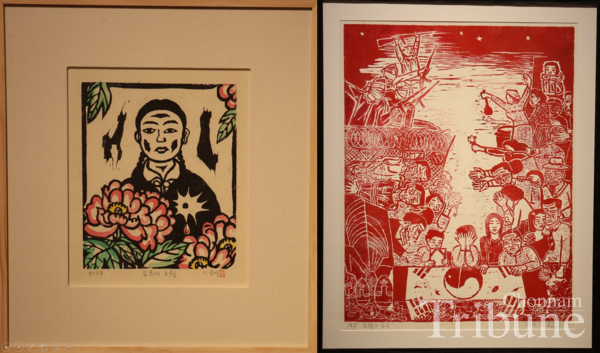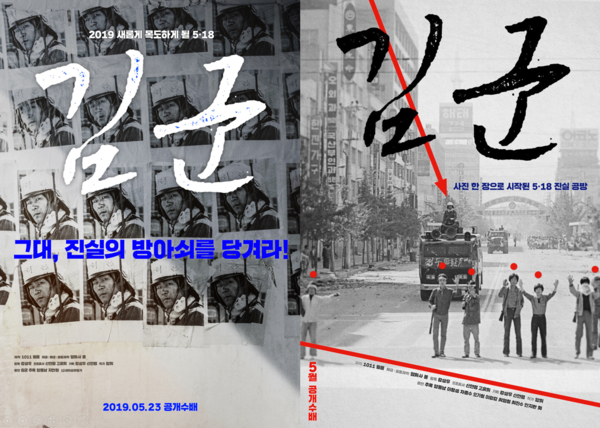
On May 18, 1980, a people’s uprising against the South Korean military government took place in Gwangju. This is still remembered as a pivotal moment in the struggle for democracy in South Korea. It is now known as the “May 18 Democratization Movement (May 18),” and this year marks the 44th anniversary of the movement. During the month of May, 1980, many citizens were brutally attacked for demanding democracy. It was a state-perpetrated massacre, one of a collection of crimes against humanity perpetrated against advocates of constitutional law throughout the world, crimes which are sure to be repeated. Therefore, it is important to remember such tragic events so that we may maintain vigilance on behalf of our democracy. There are different ways of remembering history; one way is to do so through the arts, through which history is reborn and enhanced. The Chonnam Tribune looked into different forms of art in which the May 18 and its strong spirit remain alive.
Movement Reshaped into Literature
“Please, write your book so that no one will ever be able to desecrate my brother’s memory again.” This is a quote from the book ”Human Acts: A Novel” by Han Kang. Dong-ho, a 15-year-old boy living in Gwangju, participates in the movement with his friend Jeong-dae. During the conflict, Dong-ho witnesses Jeong-dae's murder. Upon returning to the scene, Dong-ho continues to search for Jeong-dae’s corpse while feeling a sense of guilt. The story continues covering the May 18 thereafter, with each chapter told from different perspectives which show the diverse emotions of the people who experienced those events. These stories allow readers to remember the sacrifices that were made to achieve democracy.
Through a recent nationwide exhibition called "May 18 Bookshelf," community bookstores and public institutions all over the country have begun increasing the availability the May 18-related literature to the public. The exhibition aims to convey the May 18 spirit embedded in different genres of books. This idea originated at the Nokdu Bookstore, which served as the base camp for activists who made posters and flyers to deliver information to citizens during the movement itself. Thus, the May 18 Bookshelf has provided access to the Nokdu Bookstore throughout the places Koreans visit on a daily basis.
Imbuing the May Spirit into Paintings
A special exhibition entitled “May Art 2024: Woodcuts_Engrave the Spirit of the Age” was held in the Gwangju Museum of Art from April 19 to May 19. This exhibition featured woodcut prints depicting brutalities committed during martial law alongside images of citizens fighting for democracy. Woodcut is a painting technique which uses wooden blocks to print images onto paper. It enables the artist to repeatedly make the same painting by continuously printing it onto new paper. It was effectively used to convey the artist's belief in the importance of democratic activism.
A total of 70 woodcut prints were shown in the exhibition to the public. “Geum-hui’s May,” by Lee Jun-seok, is one of them. It is believed to be about a girl named Geum-hui, who was shot after donating blood to the injured patients in the Gwangju Christian Hospital. The composition of the woodcut print is similar to a portrait of the deceased, which emphasizes the May tragedy. Another woodcut is “The Wailing of May” by Kim Bong-jun. On the lower part of the print, there is victim's coffin, and around the coffin, there are saddened mourners. On the sides of the print, there are members of the citizen militia, their supporters, and arrested freedom fighters. Jeong Seon-sun, a visitor to the exhibition, said, “Seeing these woodcut art pieces about the May 18 makes me sympathize with the characters in the painting. I once again realize that democracy is not something obtained for free."

Finding Kim Gun to Remember the Truth
Kang Sang-woo’s documentary film ”Kim Gun” (Mr. Kim) is a story that starts with one question about a picture that was taken during the May 18 Uprising; "Who is that armed, uniformed man on a truck?" Ji Man-won, a military theorist, says he is a North Korean soldier. Some people recognize him as Kim Gun, one of their neighbors and a citizen militiaman who fought for democracy. The movie covers the process of finding who Kim Gun really was.
However, it does not only focus on the identity of Kim Gun. While interviewing the people who remember Kim Gun from the photo, the filmmakers listen to the memories of the other citizen militia members and the people who helped them. The witnesses testify about the situation while still shaking from pain and emphasize that the truth must never be distorted. The film continuously helps the viewers who did not witness the events of May, 1980 experience the movement in a new way.

There is a famous saying about history: “If history is not remembered, it will be repeated.” Looking at the May 18 from diverse perspectives and through different forms of art allows people to re-experience the movement today and connect with its important lessons about democracy.
By Han Seung-hwan, Editor

